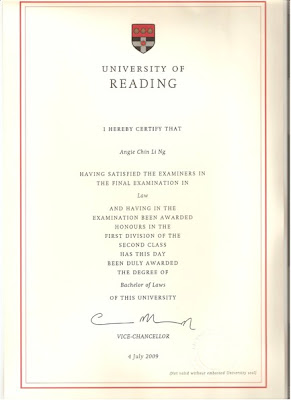In 2021, a peruvian court docket allowed euthanasia for a single individual, Ana Estrada. Courts throughout the widespread regulation world have for a while given effect to international legal obligations by the use of administrative legislation doctrines and methods. This growth has set off alarm bells amongst traditionalists, as they perceive this offers the manager new powers and/sor the judiciary an excessive amount of power. We argue that the reply to such legitimacy concerns is provided by what we term the principle of legality, the principle that broadly expressed discretions are topic to the fundamental values of the frequent legislation, including values expressive of human rights. Hence, the precept of legality entails an obligation on administrative decision-makers to give causes for their selections and requires judges to defer to the extent that they discover that the proffered justification meets the applicable standard.

This mixture makes choice-makers accountable to fundamental values with out squeezing out the house for train of their discretion. The United States Supreme Court choice in Glucksberg is not the ultimate word on a person’s right to physician-assisted suicide. The Court merely held that the Washington regulation forbidding doctor-assisted suicide is constitutional. The Court didn’t rule that a state is forbidden from authorizing assisted suicide. Presently, the state of Oregon permits physician-assisted suicide, and United States Attorney General John Ashcroft is attempting to legally stop this.
In 1992, California Proposition 161, a measure that may have legalized voluntary energetic euthanasia and assisted suicide, was voted down by the margin of p.c. On November 5, 1991, Washington Initiative 119, a measure designed to assist a affected person’s suicide and to interact in energetic voluntary euthanasia, was defeated by the same margin of %. The only assisted suicide initiative that has passed to date occurred in Oregon on November eight, 1994, when Measure sixteen handed by a margin of p.c. In addressing the problem of the integrity of the medical profession, the Ninth Circuit acknowledged a concern with having the doctor within the position of killer, as opposed to healer. The Ninth Circuit famous that virtually every state authorizes an individual to establish a “living will” that documents his/her specific desire regarding future life-sustaining efforts. The Ninth Circuit stated that allowing a physician to “pull the plug” or to allow an individual to starve to demise isn’t any different than offering an individual demise-inducing medicine, and in fact, is much less humane. Physicians routinely and overtly present medicine to terminally ill patients with the knowledge that it’ll have a “double effect”–reduce the patient’s pain and hasten dying.
Voters Must Know: Assessing The Legality Of Redboxing In Federal Elections
Doctors can cease giving a affected person life sustaining treatments such as ventilators, feeding tube etc. after being sedated, permitting the patient to die peacefully in their sleep.This solely happens in certain circumstances. Since 2012, the regulation of sufferers’ rights creates the right to informed consent, which allows accepting or refusing any medical therapy. Currently, a bill to allow energetic euthanasia and assisted suicide is being discussed by the congress. The invoice was accredited in general by the Chamber of Deputies on 12 December 2020. In this age of statutes and human rights the widespread legislation precept of legality has assumed a central significance. It is however the aim of this article to stipulate the nature and scope of the precept of legality in up to date Australian law.
Footer Legal Hyperlinks
On the opposite hand, the 9 people who die by assisted suicide would, on common, have died within three weeks, and could have been adequately handled by pain medicine and counseling, and if needed, whole sedation. Proponents of physician-assisted suicide contend that competent, terminally sick sufferers with lower than six months to live should have the proper to terminate life. In regard to depletion of family belongings, more than seventy p.c of the people who would qualify for assisted suicide are covered by Medicare, Medicaid, and/or non-public health insurance. In reality, sixty-seven percent of the terminally sick sufferers who request assisted suicide are sixty-five years of age or older and are lined by Medicare.
In Ireland, it is unlawful for a doctor to actively contribute to somebody’s dying. It is not, however, unlawful to remove life help and other therapy (the “right to die”) should an individual request it. A September 2010 Irish Times poll showed that a majority, fifty seven% of adults, believed that doctor-assisted suicide must be authorized for terminally ill patients who request it.

